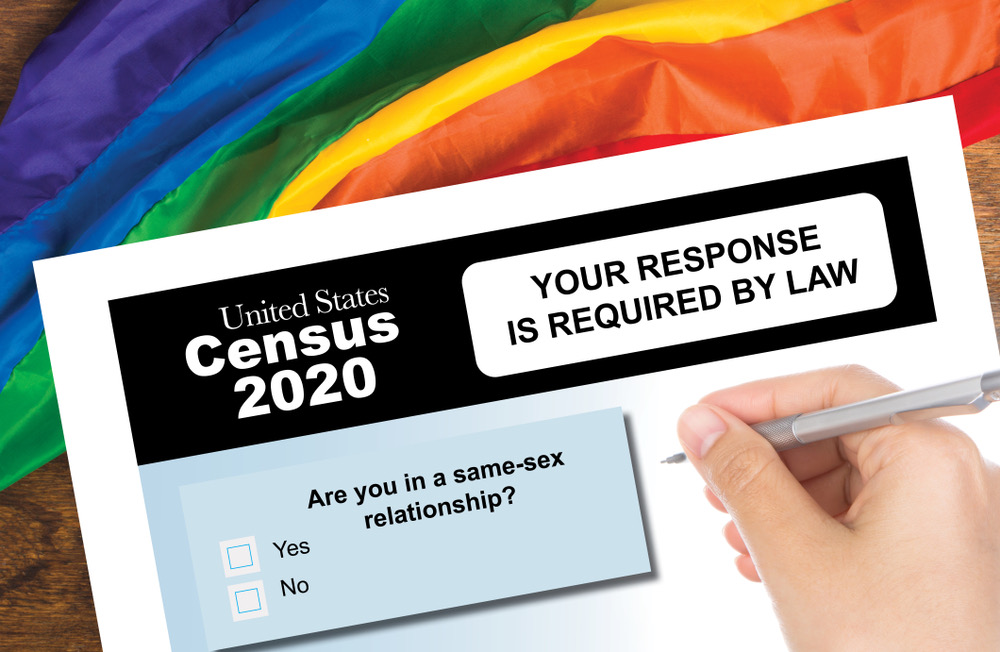2020 Census FAQ for Queer Working People

What is the 2020 Census?
Every 10 years, the Federal Government attempts to count every person living in the US. The 2020 Census will aim to capture everyone living in the US on April 1st, 2020.
When does the Census begin?
Data collection begins in March and will continue through May 14, 2020. The Census can be completed online, by mail, or by phone.
Will there be any questions capturing data about LGBTQ people on the 2020 Census?
Shortly after President Trump took office in 2017, the US Census Bureau removed questions on gender identity and sexual orientation from its list of proposed questions for the 2020 Census. This Census will allow responses that indicate same sex married and unmarried couples living in the same household.
Do I have to fill out the Census?
Yes. The law requires that everyone complete the Census or face the possibility of being fined “…not more than $100.”
What happens if I don’t complete it?
If you don’t fill out the form before the end mid-May 2020, the Census Bureau will send people, known as enumerators, to visit your home and collect responses in person. If the enumerator is unable to connect with you the law says they can complete the survey on your behalf, which can result in an undercount of your household.
What happens to the information collected?
It is important to fill out the Census form accurately and completely. Census data is used to determine the number of seats each state has in the U.S House of Representatives and to (re)draw congressional boundaries. It is also used to distribute billions of dollars in federal funds to state governments and local communities. Accurate counts ensure that funding is equitably distributed for many programs such as Medicaid, Head Start, Section 8 housing vouchers, and other programs that help working families.
How has coronavirus (COVID-19) affected the Census?
While the US Census Bureau has modified their schedule by a few weeks, the Census is still set to be completed later this year. By law, the Census Bureau must deliver the results of the Census to the President no later than December 31, 2020.
How should LGBTQ working people respond to questions on the Census?
There are just 9 questions on the Census, with a few extra questions to be answered by every additional person who lives in the same household. Some of them may require specific answers for LGBTQ folk.
Household
Question 1: How many people were living or staying in this house, apartment, or mobile home on April 1st, 2020?
The Census aims to count everyone, even if they do not have a permanent address. LGBTQ working people experiencing housing instability can still fill out the Census by reporting the address they stay at most often, even if it’s not an actual residence. If you have someone staying with you temporarily, they can be included on your Census form. The Census Bureau doesn’t check if everyone you report is actually on your lease – it’s more important to accurately report people living in your house because doing so will help ensure fair and accurate funding for social services.
Remember also to count young children and babies. Any child born before or on April 1, 2020 should be included, even if they are still at the hospital!
Person 1
Question 5: What is Person 1’s name?
There is no requirement to use the same name as on your official documents (driver’s license, birth certificate etc.) when you answer this question. Its purpose is to ensure that the Census Bureau is not receiving multiple responses from the same person, not to cross check with any other government records. Feel free, therefore, to give the name you use most often.
Question 6: What is Person 1’s sex?
Unfortunately, the Census restricts the answer to this question to “Male” and “Female” only- leaving non-binary and intersex people excluded from representation. The Census does not check any individual’s answers with any other documentation, so once again it is possible to self-identify as either ‘Male’ or ‘Female’. You can choose the gender/sex that feels the most comfortable to you. If you do choose to leave this answer blank you may receive a call from the Census Bureau.
Person 2+
Question 3: How is this person (Person 2, 3, etc.) related to Person 1?
In the 2010 Census respondents were offered the option of choosing “same-sex married couple” when answering this question. The 2020 Census will also allow respondents to choose “same-sex unmarried couple.” You will also be able to choose if you are living with biological, step, or adopted sons or daughters and/or brothers or sisters, in addition to other relatives. These responses are unnecessarily gendered, and erase bisexual, intersex, and transgender people. They also do not capture data on LGBTQ people who are not in relationships or who do not live with their partners. LGBTQ working people often live with “chosen family” or multiple families, and the response options do not accurately capture these complex living situations. Because of this, the best response may well be “other non-relative.” It’s important to remember that everyone living in the household must be counted, even if your relationship does not adequately fit in the categories provided. If you co-parent, you must count the child(ren) in the household where they live the majority of the time. If it’s an equal 50-50 split, then you choose one household only.
Download a print version of this FAQ
Adapted from materials by the National LGBTQ Task Force and the U.S. Census Bureau

Pingback: What the U.S. Census means to LGBTQ people & why you should fill it out. Now. – lgbt-99.com